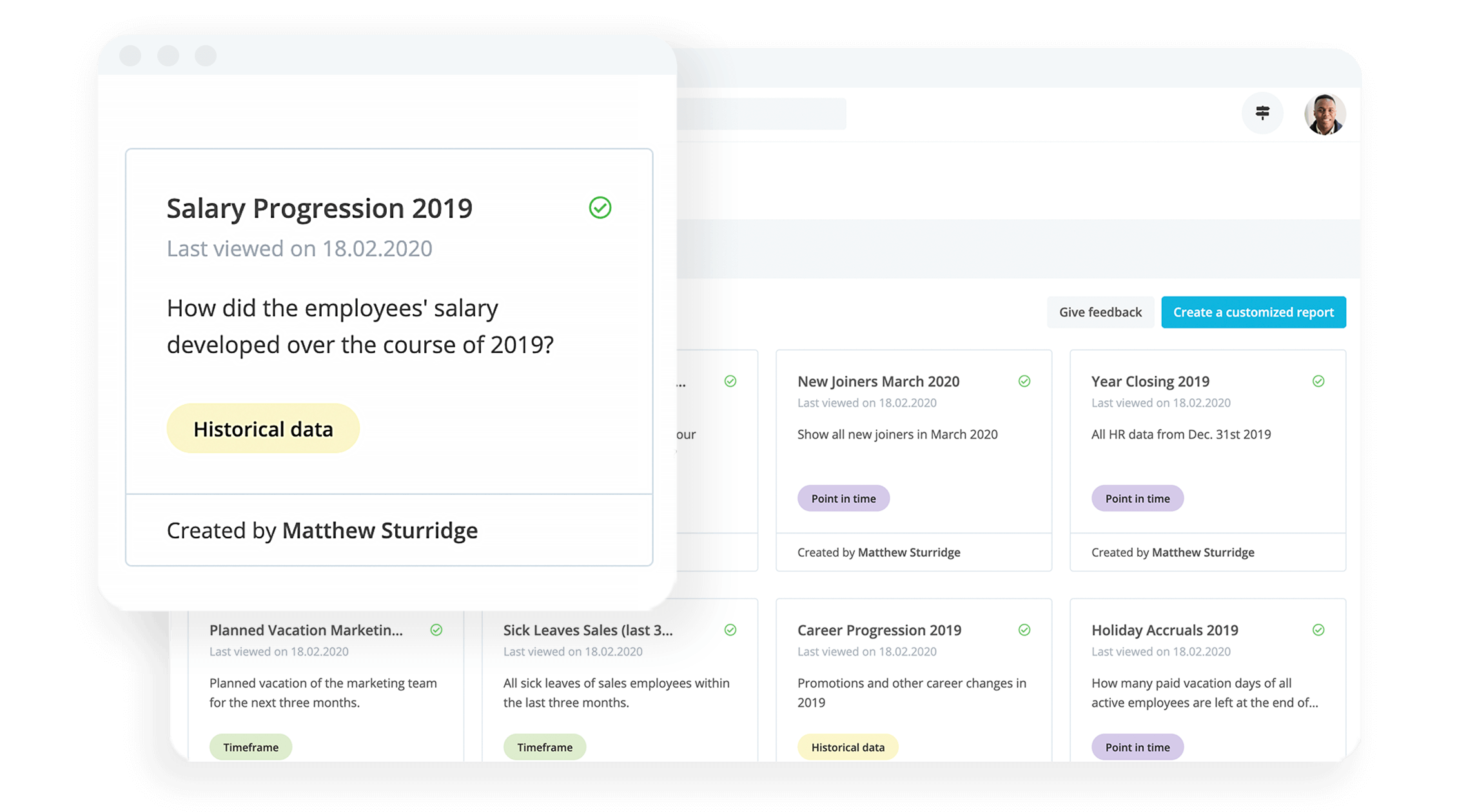
The Personio People Manual
Over a decade of expertise on HR analytics and critical KPIs.
Download your copy todayLabour Retention Formula: How to Calculate Employee Retention
Before you can fix any retention issues your organisation might be having, you need to calculate it: Ideally with a labour retention formula. In this article, we will show you how to calculate and track the metric over time using a reliable labour retention formula.
Download nowWhat Is a Labour Retention Rate?
Labour retention rate, also known as employee retention rate, is the proportion of the labour force who remained employees from the beginning to the end of a specific time period. The retention rate does not include any new employees who were hired during that time – it’s only the existing employees that the company retained.
Retention rates are usually shown as a percentage and can be calculated quarterly or annually.
Why Is Employee Retention Rate Important?
Understanding your employee retention rate and tracking how it changes over time is crucial as an employer. When you have good employee retention, it means employees are staying with the organisation for a long time, benefitting the employee, their team, and the overall business.
If the retention rate is low (i.e. the organisation has high turnover), then the cost of replacing those employees can be quite high. According to the Society for Human Resource Management (SHRM), it costs companies an average of 6 to 9 months of an employee's salary to replace him or her.
In the UK, it costs the average employer £3,000 and takes 27.5 days to hire a new employee. That adds up to wasted time and money that could instead be used for improving training, employee offerings, or workplace culture.
It’s important to track the employee retention rate over time so you can spot any issues (e.g. decrease in retention rate between quarters) and work to fix them quickly.
Labour Turnover vs. Retention Rate
Labour turnover and labour retention rate are basically opposite sides of the same coin. They tell you the same thing but in different terms.
The labour retention rate is the percentage of employees who stay during a period of time. Labour turnover is the percentage who leave.
Neither of these metrics includes new hires, but if you added all three of those percentages together (i.e. labour retention rate + labour turnover + percent of new hires), in theory it should equal 100% or your total workforce.
Calculate Your Labour Retention Rate
As mentioned previously, the labour retention rate is usually shown as a percentage. The labour retention formula is quite simple: divide the total number of employees at the end of the time period by the total number of employees at the beginning of the time period, then multiply by one hundred. A higher retention rate is better.
Here’s an example:
You had 200 employees at the beginning of January 2022.
At the end of December 2022, you had 170 employees.
170 / 200 = 0.85
0.85 × 100 = A retention rate of 85%
The average labour retention rate – and what’s considered a “good” retention rate – will depend on your location, industry, the time period, and other factors. The average employee retention rate in the US is about 90%, while in the UK it’s closer to 85%. Note that industries like retail, service and food typically have lower retention rates due to high turnover and seasonal employment.
The People Manual: HR Analytics & KPIs

Over half a decade of collected insights on everything related to the KPIs that drive success in HR. Grab your free copy right now.
Download your copy todayTop 3 Strategies for Improving Your Labour Retention Rate
To improve your labour retention rate, you need to implement strategies that get employees to stay with the organisation longer. Here are three of the best strategies to boost that retention rate:
1. Work Culture and Communication
Three of the top reasons people left their jobs in 2021 and 2022 had to do with company culture and communication.
Research from Firstup found that 33% of employees don’t feel recognised or even listened to within their own company.
Rates of burnout are at record highs, and reaching that point is often due to a culture issue.
Overall company culture is one of the most important factors in deciding how an employee feels about their job or employer
Developing an open, positive, comfortable work culture can boost employee morale and encourage people to stay with the organisation.
Additionally, fostering an environment of open discussion can open the door for employees to discuss any issues with HR professionals before they escalate into a reason to leave.
2. Growth Opportunities
Offering career growth opportunities to employees will ensure they don’t feel stuck in the position they are in.
Companywide education opportunities (i.e. learning and development initiatives), job rotation within departments, and job enrichment are great ways to show employees that you have their growth in mind. Additionally, internally shifting an employee's job roles can further engage them and show them that the organisation cares about their future.
3. Compensation and Benefits
Rewarding your employees with benefits – both financial and non-financial – is a great way to show them that you value them and want to keep them around. Financial compensation benefits could include salary increases, bonus programs, paid family leave, stock options, etc.
Non-financial benefits can include things like flexible working arrangements, learning and development opportunities, subsidised gym memberships, free meals and more.
Frequently Asked Questions (FAQ) About Labour Retention Formulas
How Do You Calculate Labour Turnover and Retention?
To calculate labour turnover, divide the total number of employees who left by the average number of workers in the year, then multiply by one hundred.
The labour retention formula is this: divide the total number of employees at the end of the time period by the total number of employees at the beginning of the time period, then multiply by one hundred
How Can Employers Boost Labour Retention?
Employers can boost labour retention by using strategies that make employees want to stay longer at the organisation. For example, building a positive work culture, fostering open communication, creating opportunities for growth and offering both financial and non-financial benefits.
